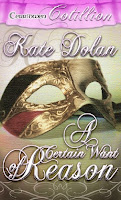 Seton asked me to explain my “Strip Piquet” scene in The Wagering Widow.
Seton asked me to explain my “Strip Piquet” scene in The Wagering Widow.
For the one or two of you who may not have read The Wagering Widow by Diane Gaston, my alter ego, this book told the story of Emily and Guy who enter into a hasty marriage, each thinking the other would provide them financial security and both discovering that they have not a feather to fly with. Guy needs money to save his crumbling estate and the people who depend on him; Emily needs money to escape a marriage to this gambler like her father. Both turn to one London gaming hell to gamble their way to a fortune. Emily wears a disguise, but Guy recognizes his wife immediately, even though his shy, timid wife masquerades as Lady Widow. She does not know he has guessed her identity when he proposes a private game of piquet. They play “strip piquet” losing one piece of clothing for every hand lost.
I loved the idea of “strip poker” for my characters, but poker was not a Regency era game. For Guy and Emily, I needed a card game of both skill and chance for them to play, a game that could lead to a loss of clothing….and more.
I’d first heard of Piquet when reading Georgette Heyer’s Faro’s Daughter. It seemed the perfect game, so I went looking on the Internet for instructions on how to play Piquet.
I found several sites willing to explain the game of Piquet, a card game that has been in existence since 1650. The problem was, I could not understand any of them. The instructions talked about exchanges of cards, declarations, winning tricks, making Repique and piquet, crossing the Rubicon, a partie and on and on. Players were requires to call out their points and remember them. All the terminology was in French.
My husband is not a card player so I had no one to play the game with to try to learn these incomprehensible rules and French words, by attempting to follow the rules. I kept reading site after site to try to find one that really explained the game enough so I could make my characters play it.
I finally discovered Meggiesoft Games, an online card game site which had a computer version of Piquet with a 30 day free download. I downloaded the game, took the tutorial which actually showed what to do, and I played the game over and over and over until I felt like I understood it. I even used the computer game to provide the details for the Strip Piquet scene. I played on the computer and recorded what cards Emily and Guy were holding as they were removing shoes, stockings, dress, shirt, corset, pantaloons……
Meggiesoft Games also had a game called German Whist, a two player version of Whist that helped me understand and write the games of whist in The Wagering Widow. I was a little wary of downloading to my computer but I had no problems at all with the site or its products. Pretty soon I was playing Piquet and Whist when I should have been writing.

Madame Bisou is the owner of the gaming hell where Emily and Guy play their seductive game of Piquet. Madame Bisou appears again in A Reputable Rake, along with Sloane, who was the villain in A Wagering Widow but who becomes a reformed rake in the next book. Madame Bisou also appears in Innocence and Impropriety by Diane Gaston, the love story for Rose from A Reputable Rake.
Innocence and Impropriety is available now from eHarlequin.com in North America and Mills and Boon in the UK. If you prefer to wait for it to appear at your local bookstore, it will arrive March 1.
My websites are in transition and may not be up to date, but if you want to read an excerpt, there is one at Amazon.com.
There you go, Seton. My explanation of Strip Piquet. In Innocence and Impropriety, you will visit Vauxhall Gardens and the King’s Theatre, as well as returning to Madame Bisou’s.
Cheers, Everyone!
Diane









